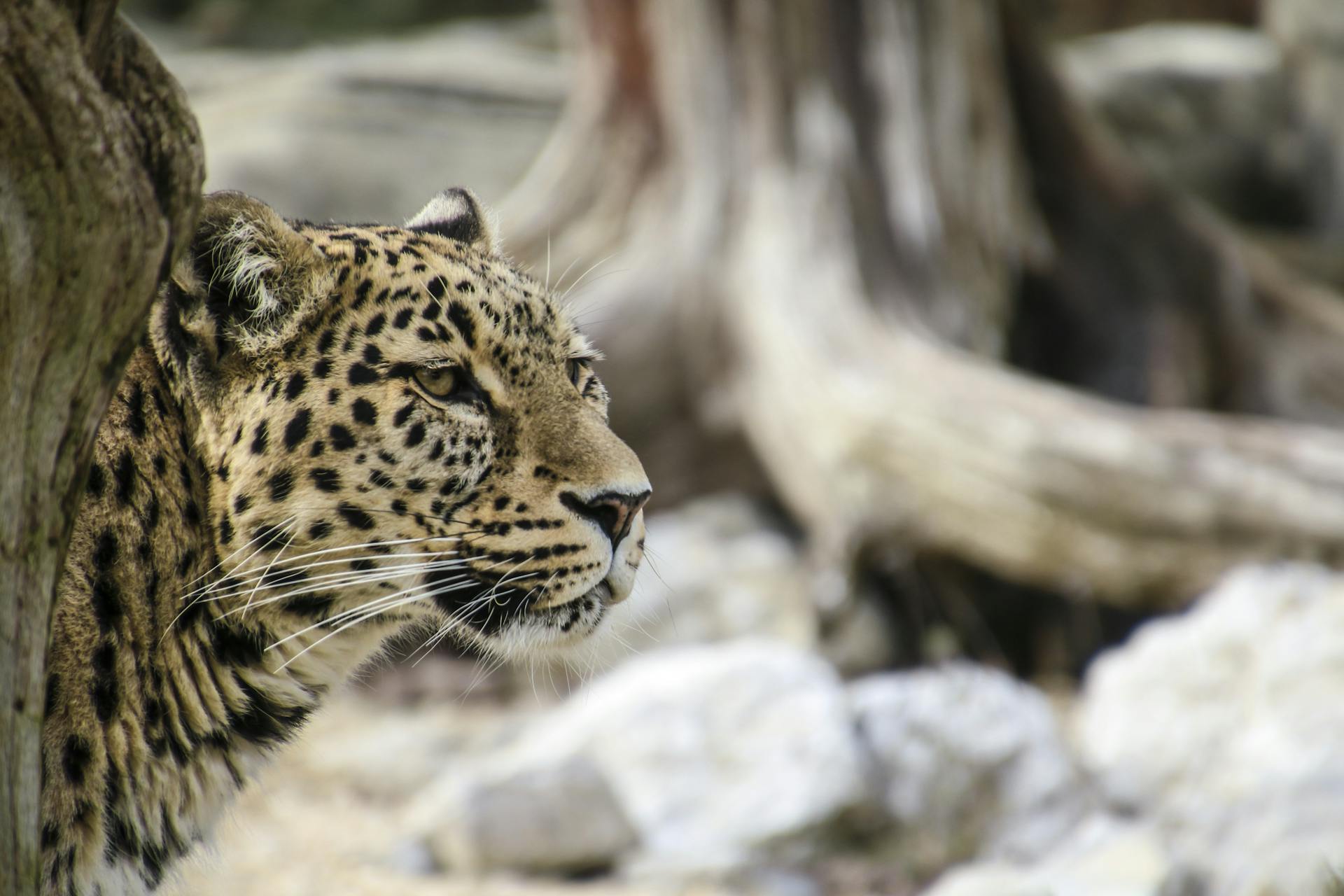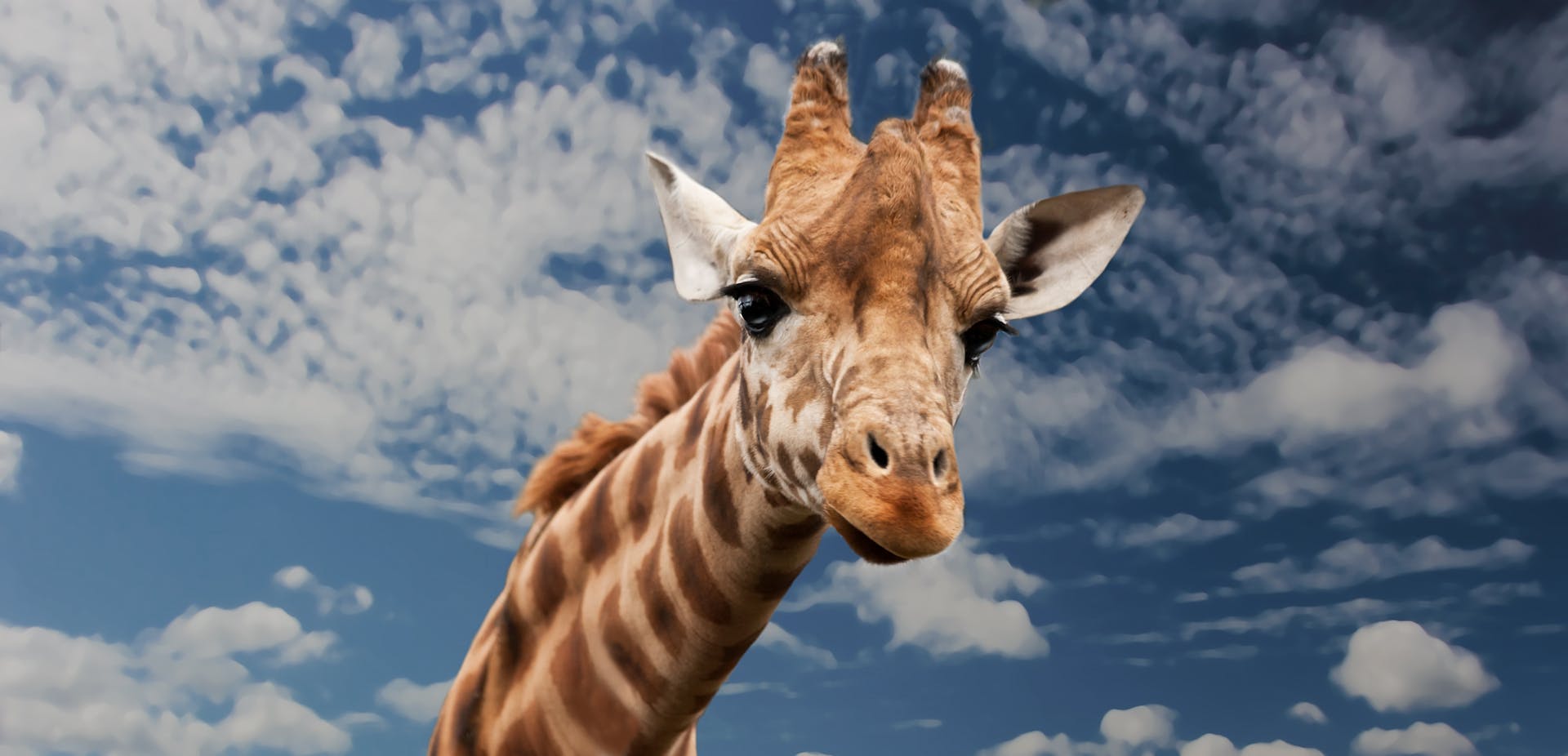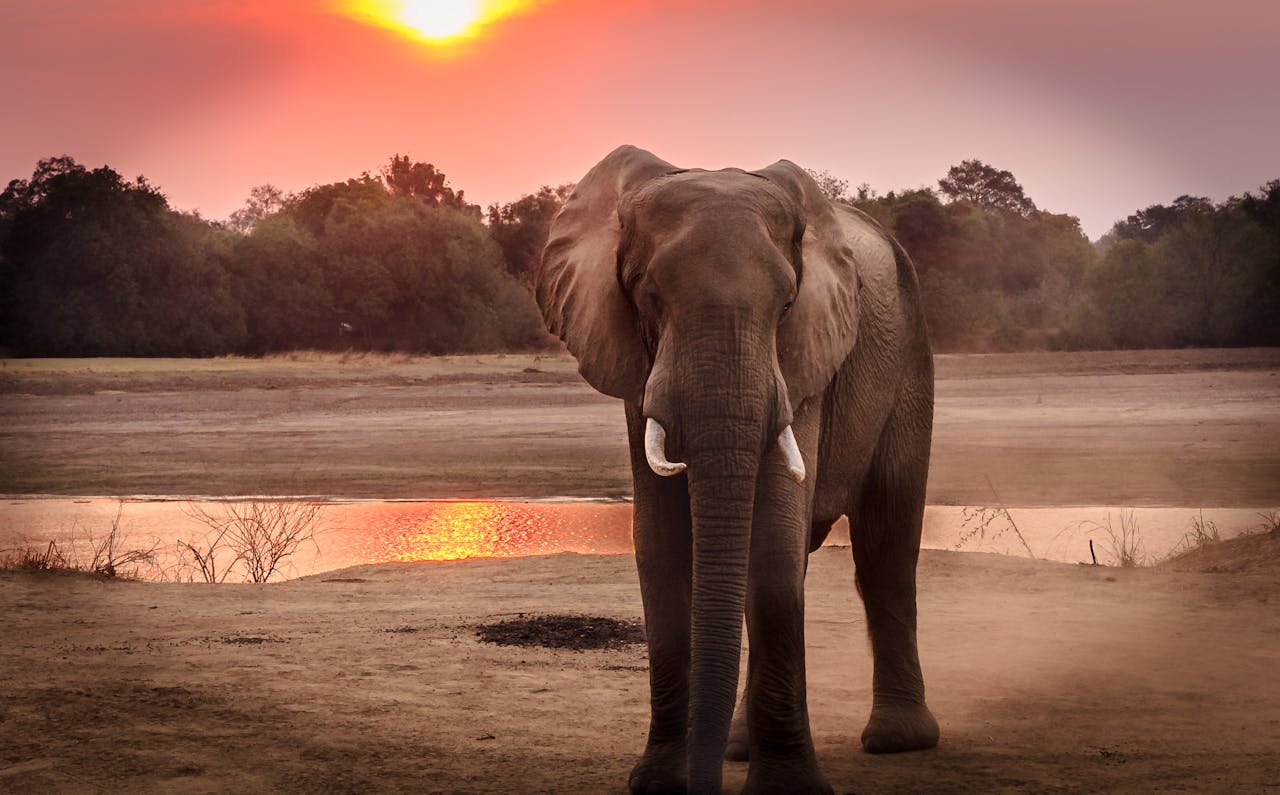Unveiling the Elusive Snow Leopard: Guardian of the Himalayas
In the shadowed crags of the Himalayas, where the thin air whispers secrets of ancient times, resides a creature so elusive that it often seems like a phantom of the mountains: the snow leopard. With its striking white fur and piercing gaze, this majestic predator glides through the rugged terrain with a grace that belies its power. Sightings of the snow leopard are so rare that for many, encountering one is the stuff of legend.
This article aims to unveil the secretive life of the snow leopard, exploring its physical adaptations, solitary behaviors, and the pressing conservation challenges threatening its survival. Join us as we delve into the hidden world of the snow leopard, a symbol of wilderness caught at the crossroads of beauty and vulnerability.
Physical Characteristics of Snow Leopards
Snow leopards are renowned for their striking appearance and physical adaptations that enable them to thrive in their harsh mountainous habitats. Here are some key features that define their physical characteristics:
1. Fur and Coloration
Snow leopards possess thick, soft fur that serves as insulation against the cold. Their coats are primarily a pale gray to yellowish hue, marked with dark rosettes and spots that provide excellent camouflage among the rocky and snowy terrain. This unique pattern helps them blend seamlessly into their environment, making them effective hunters.
2. Body Size and Structure
Adult snow leopards typically weigh between 22 to 55 pounds (10 to 25 kilograms), with males generally larger than females. They measure about 3 to 4.5 feet (90 to 135 centimeters) in body length, excluding their long tails, which can add another 2 to 3 feet (60 to 90 centimeters). Their robust body structure, muscular limbs, and large paws are adaptations for navigating steep and rugged landscapes.
3. Tail
One of the most distinctive features of the snow leopard is its long, thick tail, which can be as long as the body itself. The tail serves multiple purposes: it acts as a counterbalance when maneuvering on rocky slopes, aids in communication through scent marking, and provides warmth as they wrap it around themselves during rest.
4. Paws and Feet
Snow leopards have large, wide paws that are covered in fur. This adaptation helps distribute their weight on snow and provides traction on rocky surfaces. Their furry paws also protect them from the cold ground, keeping their feet warm in freezing temperatures.
5. Facial Features
Snow leopards have distinctive facial features, including high cheekbones and a broad, rounded head. Their eyes are large and slightly slanted, giving them excellent night vision, which is crucial for hunting in low-light conditions. The eyes are typically a pale green or gray color, contrasting beautifully with their fur.
6. Adaptations for Hunting
The physical characteristics of snow leopards are finely tuned for their role as apex predators. Their powerful forelimbs allow them to leap up to 30 feet (approximately 9 meters) to catch prey, and their strong jaws and sharp teeth are essential for grasping and killing their quarry. Their keen sense of hearing and excellent eyesight enable them to detect movement and locate prey from a distance.
Habitat and Range of Snow Leopards
Snow leopards primarily inhabit the rugged mountain ranges of Central and South Asia. Their range extends across several countries, including:
- Himalayas: Found in countries like Nepal, Bhutan, and northern India, snow leopards thrive in the steep, rocky terrains of the Himalayas, where they utilize cliffs and ledges for stalking prey.
- Tian Shan Mountains: This mountain range stretches across Kazakhstan, Kyrgyzstan, and Uzbekistan. Snow leopards are well adapted to the harsh climates and high altitudes, often residing at elevations between 3,000 and 4,500 meters (approximately 9,800 to 14,800 feet).
- Altai Mountains: Located in western Mongolia and parts of Kazakhstan and Russia, these mountains provide a critical habitat for snow leopards. The diverse ecosystems here support various prey species, essential for their survival.
- Pamirs: Known as the “Roof of the World,” this region spans parts of Tajikistan, Afghanistan, and China. The Pamirs’ high-altitude plateaus and steep cliffs are ideal for snow leopards, who use the rocky terrain to hunt and evade threats.
Snow leopards prefer alpine and subalpine environments, characterized by rugged terrain, steep slopes, and rocky outcrops, which provide them with excellent cover for stalking prey. Their habitat often consists of open grasslands, shrubby areas, and forested regions at higher elevations.
Adaptations to Habitat: Snow leopards are specially adapted to their cold and mountainous habitat. Their thick fur, long tails, and wide, fur-covered feet allow them to move easily over snow and rocky surfaces. These adaptations also help them regulate body temperature in extreme weather conditions, ensuring their survival in such harsh environments.
Threats to Habitat: Despite their adaptability, snow leopards face significant threats from habitat loss due to human encroachment, climate change, and increased livestock grazing. These factors can lead to reduced prey availability and increased competition with domestic animals, further endangering this elusive species.
Hunting and Diet of Snow Leopards
Snow leopards are remarkable hunters, equipped with both physical adaptations and behavioral strategies that enable them to thrive in their challenging environments. Their hunting techniques and dietary preferences are crucial for their survival in the harsh mountainous regions of Central and South Asia.
1. Dietary Preferences
Snow leopards primarily prey on a variety of ungulates, which are hoofed mammals. Their diet typically includes:
- Blue Sheep (Bharal): A primary prey species, blue sheep are well adapted to rocky terrains, making them a favorite target for snow leopards.
- Ibex: These agile climbers are often found in steep, rugged areas, and snow leopards have evolved to pursue them in their natural habitats.
- Marmots: In addition to larger prey, snow leopards also hunt smaller mammals like marmots, especially during summer when their preferred ungulates are less accessible.
- Other Prey: Depending on the region and availability, snow leopards may also hunt domestic livestock, such as goats and sheep, leading to potential conflicts with human communities.
2. Hunting Techniques
Snow leopards employ a range of hunting strategies that leverage their physical strengths and environmental knowledge:
- Stalking and Ambushing: Snow leopards are solitary hunters that rely on stealth and patience. They use their excellent camouflage to blend into the rocky landscapes and stalk their prey from a distance. Once within striking range, they launch a surprise attack, often relying on their powerful legs to leap at their prey.
- High-altitude Hunting: Their strong adaptations for mountainous terrain allow snow leopards to navigate steep cliffs and rocky outcrops. They often position themselves above their prey to gain a strategic advantage, using elevation to execute precise and powerful jumps.
- Scent Marking: To establish territory and signal their presence to potential mates, snow leopards use scent marking. They may also use these markings to communicate their hunting success to others of their species.
3. Feeding Behavior
Once a snow leopard has successfully captured its prey, it exhibits several interesting feeding behaviors:
- Meal Size: Snow leopards can consume a significant amount of meat in one sitting, often eating 20 to 30 pounds (9 to 14 kilograms) in a single feeding. After consuming their fill, they may cache the remaining meat by covering it with snow or rocks to protect it from scavengers, allowing them to return later to feed.
- Feeding Patterns: Snow leopards typically feed alone and may leave their kill to return later. Their ability to survive for days or even weeks between meals is a testament to their adaptability in a food-scarce environment.
- Hunting in Pairs or Groups: While snow leopards are primarily solitary, they may occasionally hunt in pairs, especially during mating season or when a mother is teaching her cubs to hunt. In these instances, they can coordinate their efforts to take down larger prey.
4. Impact on Ecosystem
As apex predators, snow leopards play a vital role in their ecosystems. By controlling the populations of their prey species, they help maintain a balance within the ecosystem, preventing overgrazing and promoting biodiversity. Their presence also indicates the health of their mountainous habitats, making their conservation crucial for the overall environmental balance.
Behavior and Social Structure of Snow Leopards
Snow leopards exhibit unique behavioral traits and social structures that reflect their adaptations to the harsh environments of high-altitude mountain ranges. Understanding these aspects is crucial for their conservation and management in the wild.
1. Solitary Nature
Snow leopards are primarily solitary animals, with each individual establishing and defending its territory. This solitary lifestyle is an adaptation to the sparse and challenging environments they inhabit, where prey availability can be unpredictable.
- Territoriality: Adult snow leopards maintain territories that can vary in size based on factors such as prey abundance and habitat quality. Males typically have larger territories than females, often overlapping with the territories of several females. Males may travel greater distances to find mates, while females tend to have smaller home ranges that encompass the areas where they raise their cubs.
- Marking Territory: Snow leopards use scent marking to establish their territories and communicate their presence to others. They mark their territory by urinating, defecating, and scratching on trees or rocks, leaving both visual and olfactory signals that deter intruders. These markings also convey important information about the individual’s reproductive status and health.
2. Mating Behavior
Snow leopards are generally monogamous during the breeding season, which typically occurs between January and March. Courtship involves various behaviors that help strengthen the bond between the male and female:
- Courtship Rituals: During courtship, males will follow females, engaging in vocalizations such as growls, chuffing, and hissing to attract their attention. Playful behaviors, such as mock fighting and chasing, are also observed, helping to establish a bond between the pair.
- Reproductive Cycle: After a gestation period of about 90-100 days, the female snow leopard gives birth to one to five cubs, usually in a secluded den. The cubs are born blind and helpless, relying entirely on their mother for nourishment and protection.
3. Maternal Care
Female snow leopards are responsible for the care and upbringing of their cubs, demonstrating strong maternal instincts:
- Nurturing and Teaching: The mother provides milk for the cubs for about three to six months, gradually introducing them to solid food by bringing them parts of her kills. She plays a vital role in teaching them essential survival skills, including hunting and climbing, which they must master before venturing out on their own.
- Cubs’ Development: Snow leopard cubs are typically weaned at around three months but may stay with their mother for up to 18 months. During this time, they learn to navigate their mountainous habitat, develop hunting skills, and establish their territories before dispersing to find their own range.
4. Social Interactions
While snow leopards are predominantly solitary, they do engage in social interactions, particularly during the mating season or in areas with high prey density:
- Scent Communication: In addition to marking territory, snow leopards communicate through scent markings that can convey information about reproductive status, health, and the presence of other individuals. This non-verbal communication is essential for minimizing direct confrontations with other snow leopards.
- Vocalizations: Snow leopards use a variety of vocalizations to communicate with one another, including growls, hisses, and chuffing sounds. These vocal signals are particularly important during the breeding season when males and females are in close proximity.
- Hierarchy: While snow leopards do not exhibit a strict social hierarchy, interactions among individuals can occur, especially in areas with overlapping territories. These interactions can range from aggressive confrontations over territory to more neutral encounters where individuals may coexist peacefully, particularly when resources are abundant.
5. Adaptations to Environment
Snow leopards have evolved various behaviors that allow them to thrive in their harsh, mountainous habitats:
- Nocturnal and Crepuscular Activity: Snow leopards are primarily crepuscular, meaning they are most active during dawn and dusk. This behavior helps them avoid extreme temperatures and reduces competition with other predators. Their adaptability to different light conditions aids in successful hunting.
- Climbing Skills: Their exceptional climbing abilities allow snow leopards to navigate the steep and rugged terrains of their habitats. They often seek refuge in rocky outcrops or steep cliffs, where they can rest, hide from potential threats, and survey their territory.
- Thermoregulation: Adaptations such as their thick fur, long tail, and large nasal passages help snow leopards maintain their body temperature in the frigid environments they inhabit. Their thick fur not only provides insulation but also aids in camouflage against the rocky landscapes.
Conservation Status and Threats Facing Snow Leopards
The snow leopard (Panthera uncia) is classified as vulnerable by the International Union for Conservation of Nature (IUCN). Their populations are declining due to a combination of natural and human-induced threats. Understanding these threats is essential for effective conservation strategies aimed at ensuring the survival of this majestic species.
1. Habitat Loss and Fragmentation
As human populations expand, snow leopards face significant habitat loss and fragmentation:
- Infrastructure Development: The construction of roads, railways, and urban areas encroaches upon snow leopard habitats, limiting their access to crucial hunting grounds and mating territories. These developments disrupt migratory patterns of prey species, making it more challenging for snow leopards to find food.
- Climate Change: Rising temperatures and changing weather patterns threaten the alpine ecosystems where snow leopards reside. As their habitat shrinks due to glacial melt and altered vegetation patterns, snow leopards may find it increasingly difficult to thrive.
2. Poaching and Illegal Trade
Poaching poses a severe threat to snow leopards:
- Targeted Poaching: Snow leopards are hunted for their beautiful pelts, which are highly valued in illegal wildlife markets. In addition to poaching for fur, they may also be killed for their bones and other body parts, which are believed to have medicinal properties in some cultures.
- Bycatch: Snow leopards can become unintentional victims of poaching, as they may be caught in traps set for other wildlife or killed when preying on livestock, leading to retaliatory killings by herders.
3. Conflict with Livestock Herders
The overlap between snow leopard habitats and livestock grazing areas leads to human-wildlife conflict:
- Retaliatory Killings: As snow leopards prey on livestock such as goats and sheep, herders may retaliate by killing them to protect their livelihoods. This conflict is particularly pronounced in regions where snow leopards and pastoral communities coexist.
- Livestock Protection: To mitigate losses, some herders resort to lethal measures against snow leopards, which exacerbates their population decline. Conservation efforts are needed to promote non-lethal livestock protection methods, such as employing guard dogs or using fencing.
4. Prey Depletion
The availability of prey species is critical to snow leopard survival:
- Overhunting of Prey: Overhunting of key prey species, such as ibex and markhor, can lead to food scarcity for snow leopards. As human populations expand, hunting pressure increases, threatening the delicate balance of the ecosystem.
- Competition: Competition with other large predators can further diminish prey availability. As habitats become more fragmented, snow leopards may struggle to find enough food to sustain themselves, impacting their reproductive success and overall population health.
5. Conservation Efforts
Despite these challenges, several conservation initiatives are in place to protect snow leopards:
- Protected Areas: Establishing protected areas and wildlife reserves is crucial for safeguarding snow leopard habitats. These areas provide safe havens for snow leopards and their prey, helping to maintain healthy populations.
- Community Involvement: Engaging local communities in conservation efforts is vital. By promoting sustainable practices and providing education on the ecological importance of snow leopards, communities can play an active role in their conservation.
- Transboundary Collaboration: Snow leopards inhabit vast territories that often span multiple countries. Collaborative efforts among governments, NGOs, and conservation organizations are essential to create comprehensive strategies for protecting snow leopards across their range.
- Research and Monitoring: Ongoing research and monitoring are critical for understanding snow leopard populations, habitat use, and behavior. By employing technologies such as GPS collaring and camera traps, researchers can gather data that informs conservation strategies.
6. Global Awareness and Advocacy
Raising awareness about the plight of snow leopards is crucial for garnering support for conservation efforts:
- Education Campaigns: Educating the public about the ecological significance of snow leopards and the threats they face can foster support for conservation initiatives. Awareness campaigns can help build empathy and motivate action to protect these elusive cats.
- International Partnerships: Global initiatives, such as the Snow Leopard Survival Strategy, promote collaboration among countries within the snow leopard range to enhance conservation efforts. These partnerships aim to improve habitat protection, reduce human-wildlife conflict, and promote sustainable development.
Conservation Efforts
Conservation efforts for snow leopards involve a combination of habitat protection, anti-poaching measures, and community engagement. Organizations are working to implement sustainable practices that support local communities while preserving the delicate ecosystems these majestic cats inhabit.
Public awareness and education play a vital role in conservation, helping to foster coexistence between snow leopards and local communities. By promoting understanding and appreciation for this magnificent species, we can contribute to the protection of the snow leopard and the fragile ecosystems of the Himalayas.
Conclusion
The snow leopard, with its haunting beauty and powerful presence, symbolizes the wild heart of the Himalayas. Protecting this magnificent creature requires a concerted effort to address the numerous challenges it faces. By prioritizing conservation and fostering a deeper understanding of this elusive predator, we can ensure that future generations will continue to hear the whispers of the snow leopard among the crags of the Himalayas.


